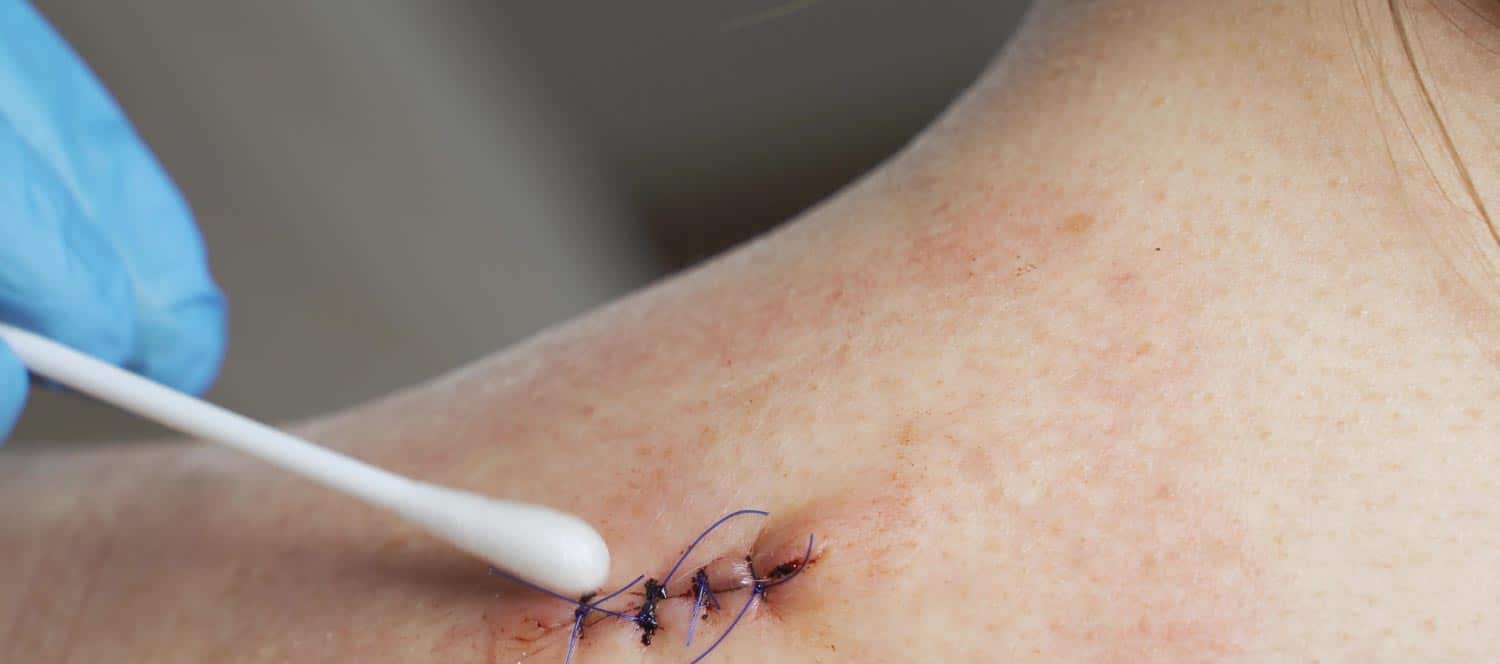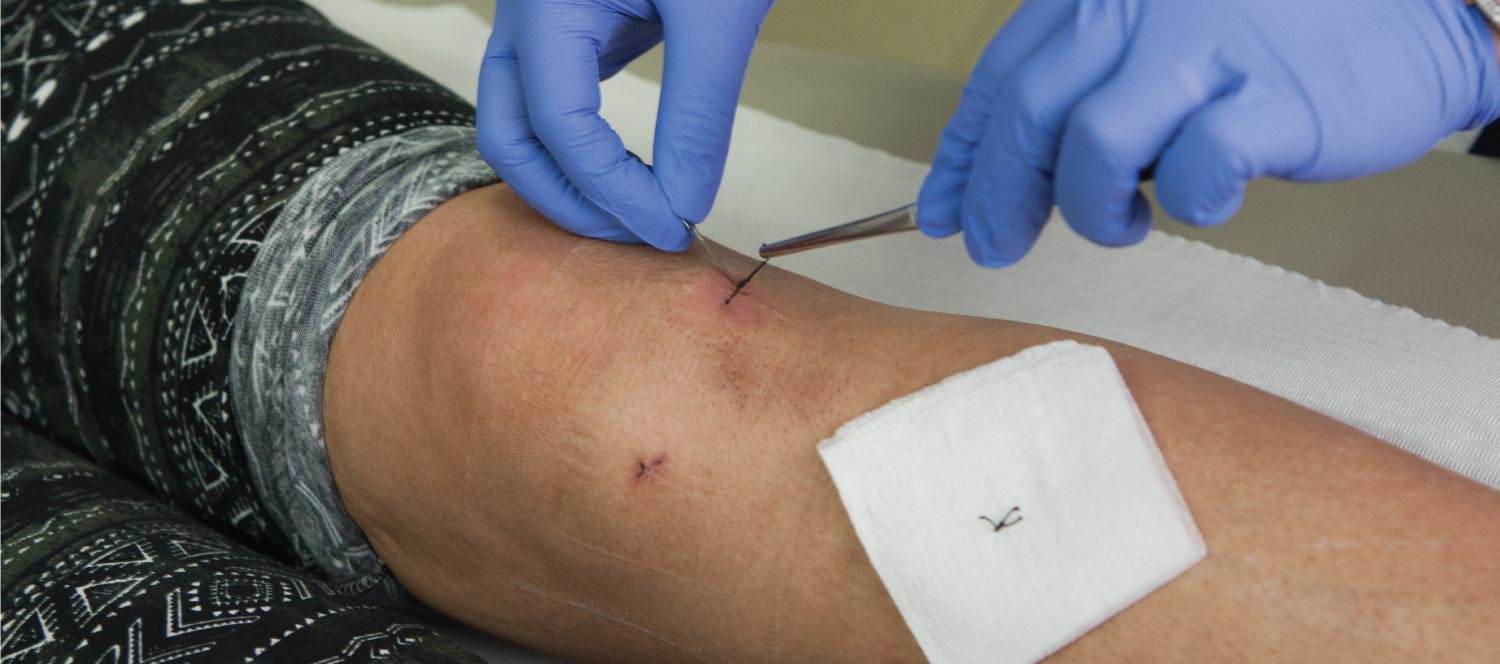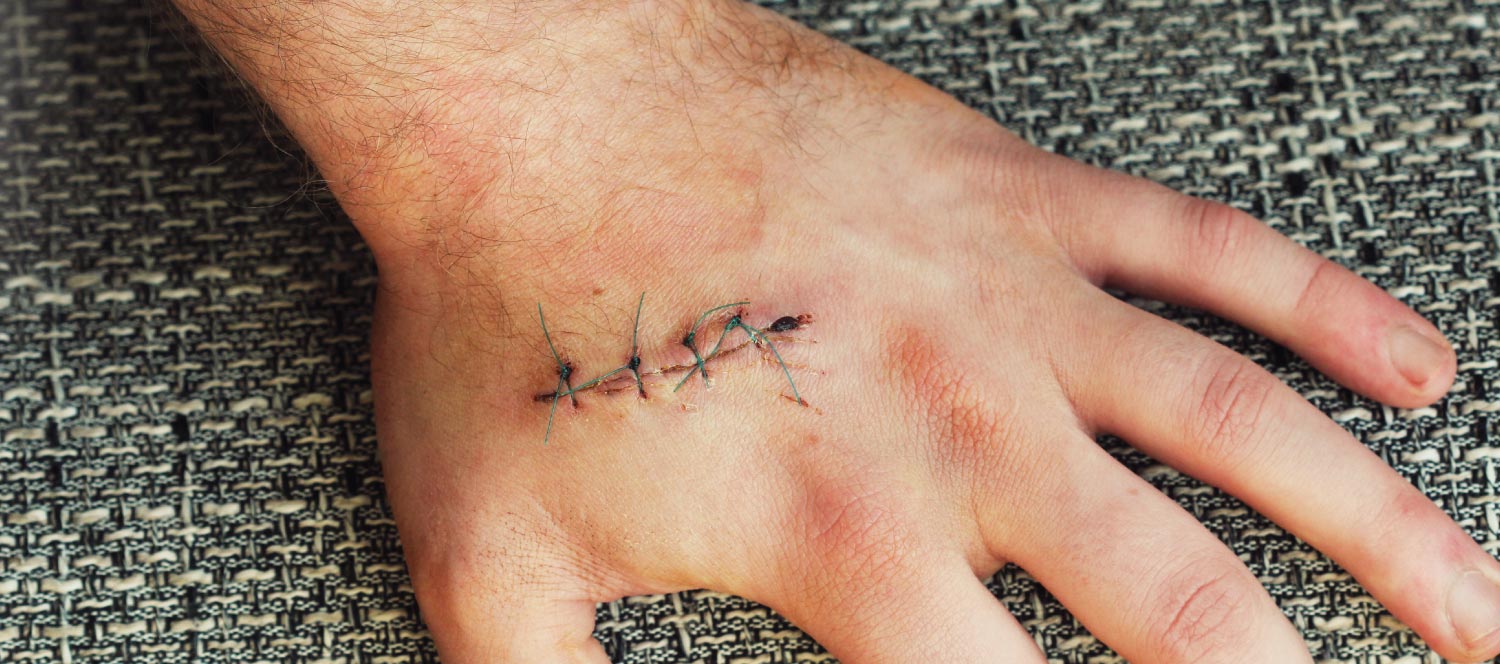Table of Contents
Does Urgent Care Do Stitches in Odessa, Texas – Priority ER 24/7
When lacerations occur and bleeding won’t stop, patients urgently ask does urgent care do stitches while searching for immediate wound treatment. At Priority ER in Odessa, Texas, our board-certified emergency physicians and experienced wound care team provide comprehensive 24/7 laceration repair services far exceeding typical urgent care capabilities, ensuring West Texas residents receive expert wound closure techniques that minimize scarring and prevent complications.
Located at 3800 E 42nd St, Suite 105, our emergency room care facility serves Odessa, West Odessa, Midland, Gardendale, and surrounding Ector County communities with advanced wound care resources. While many urgent care centers offer basic suturing for simple cuts, complex lacerations, facial wounds, and injuries requiring specialized repair techniques demand the comprehensive capabilities only emergency departments provide.
Wound Care Capabilities: Urgent Care vs Emergency Departments (2024)
The question ‘does urgent care do stitches’ oversimplifies wound care complexity. While many urgent cares perform basic suturing, factors like wound depth, location, contamination risk, and patient age often exceed their capabilities. Emergency departments provide the full spectrum of wound care, from simple closures to complex reconstructive techniques.
The Reality of Stitches at Urgent Care
Understanding what urgent care centers actually provide for wound care helps patients make informed treatment decisions. While advertisements may suggest comprehensive suturing services, the reality often involves significant limitations in wound types treated, closure techniques available, and staff expertise that can impact healing outcomes and cosmetic results.
Our emergency diagnostic imaging capabilities complement wound care by identifying foreign bodies, assessing bone involvement, and evaluating tissue damage invisible to external examination. This comprehensive approach ensures wounds receive appropriate treatment addressing all aspects of injury, not just visible lacerations.

Types of Wounds Urgent Care Can Handle
Most urgent care centers limit wound treatment to simple, superficial lacerations in non-cosmetic areas. Straight cuts less than two inches long, located on extremities without tendon or nerve involvement, represent typical cases urgent care providers feel comfortable managing. However, even these seemingly simple wounds may exceed capabilities if complications arise.
A Gardendale teenager sliced her palm on broken glass, severing a tendon. The urgent care attempted closure but couldn’t assess or repair tendon damage. At Priority ER, immediate surgical consultation and proper layered repair restored full hand function. Initial inadequate treatment often complicates definitive repair.
A Gardendale teenager sliced her palm on broken glass, severing a tendon. The urgent care attempted closure but couldn’t assess or repair tendon damage. At Priority ER, immediate surgical consultation and proper layered repair restored full hand function. Initial inadequate treatment often complicates definitive repair.
Staffing and Expertise Limitations
Urgent care staffing models typically rely on family practice physicians or nurse practitioners with limited wound care training. While capable of basic suturing, they often lack experience with advanced techniques like undermining, layered closures, or specialized suture patterns that optimize healing and minimize scarring in complex wounds.
Time constraints in busy urgent care settings often result in rushed wound closures prioritizing speed over cosmetic outcomes. Emergency departments maintain dedicated procedure rooms and experienced staff allowing meticulous wound preparation, careful layer-by-layer closure, and aesthetic considerations particularly important for visible areas.
Equipment and Supply Constraints
Basic suture materials available at urgent cares may not include fine sutures needed for facial repairs, absorbable deep sutures for layered closures, or specialized wound closure devices. Limited anesthetic options can make proper wound exploration and cleaning painful, potentially leaving contamination that causes infection.
When Urgent Care Cannot Help
Multiple wound characteristics exceed typical urgent care capabilities, requiring emergency department resources for proper treatment. Deep lacerations exposing fat, muscle, or bone need layered repair techniques preventing dead space and optimizing strength. Wounds over joints require specialized suturing accommodating movement without dehiscence.
Facial lacerations demand meticulous cosmetic repair techniques minimizing scarring in highly visible areas. Our pediatric emergency care team specializes in child-friendly wound repair using distraction techniques, appropriate sedation when needed, and suture materials minimizing scarring in growing tissues.
| Wound Type | Why ER Needed | Urgent Care Limitation | Potential Complications |
|---|---|---|---|
| Facial Lacerations | Cosmetic outcome critical | Lack fine sutures/expertise | Permanent visible scarring |
| Deep Hand/Foot Wounds | Tendon/nerve assessment | Cannot evaluate structures | Loss of function |
| Contaminated Wounds | Extensive irrigation needed | Limited cleaning ability | Serious infection risk |
| Wounds Over Joints | Special techniques required | Basic suturing only | Dehiscence with movement |
| Animal Bites | Infection risk management | Limited protocols | Rabies, severe infection |
Emergency Room Wound Care Excellence
Emergency departments excel at wound care through comprehensive resources, specialized training, and integrated services addressing all aspects of traumatic injuries. Priority ER’s wound care capabilities extend far beyond simple suturing to include advanced closure techniques, infection prevention protocols, and aesthetic considerations ensuring optimal functional and cosmetic outcomes.
Our integration of laboratory testing services with wound care enables immediate assessment of infection markers, tetanus immunity status, and coagulation parameters affecting wound management. This comprehensive approach identifies and addresses factors that could compromise healing before wound closure.
Modern wound care extends beyond simple suturing to encompass tissue handling, tension management, and layer-specific repair optimizing outcomes. Emergency physicians trained in advanced techniques achieve superior cosmetic results while ensuring wound strength. The difference between basic and expert repair becomes evident in long-term scarring.
Modern wound care extends beyond simple suturing to encompass tissue handling, tension management, and layer-specific repair optimizing outcomes. Emergency physicians trained in advanced techniques achieve superior cosmetic results while ensuring wound strength. The difference between basic and expert repair becomes evident in long-term scarring.
Advanced Suturing Techniques and Options
Emergency departments employ sophisticated closure techniques tailored to specific wound characteristics and locations. Subcutaneous sutures eliminate dead space in deep wounds, while careful skin edge eversion prevents depressed scars. Mattress sutures provide strength for high-tension areas, and running subcuticular closures optimize cosmetic results in linear lacerations.
Alternative closure methods expand treatment options beyond traditional suturing. Tissue adhesives work well for small pediatric facial lacerations, eliminating needle fear while providing excellent cosmetic results. Surgical staples enable rapid closure of large scalp lacerations, while steri-strips augment suture repairs in areas prone to tension.
Comprehensive Wound Evaluation
Our emergency team assesses wound depth, contamination, and involved structures while controlling bleeding. Unlike wondering if urgent care can help, you receive immediate expert evaluation. Visit our 24-hour facility for guaranteed comprehensive wound care.
Meticulous Wound Preparation
Proper anesthesia enables thorough irrigation removing contamination and debris. Wound exploration identifies foreign bodies or structural damage requiring repair before closure.
Expert Closure Execution
Technique selection based on wound characteristics optimizes strength and appearance. Layer-by-layer repair addresses deep structures before meticulous skin approximation.
Comprehensive Discharge Instructions
Detailed wound care instructions, follow-up arrangements, and signs of complications ensure optimal healing. Suture removal timing prevents railroad track scarring.
Initial Assessment
Complete evaluation of wound and associated injuries.
Wound Preparation
Thorough cleaning and assessment under proper anesthesia.
Closure Technique
Expert suturing using optimal techniques for location.
Aftercare Planning
Detailed instructions ensuring proper healing.
Complex Wound Management
Emergency departments excel at managing complex wounds requiring more than simple suturing. Avulsion injuries with tissue loss may need undermining and advancement flaps for tension-free closure. Stellate lacerations from blunt trauma require careful tissue preservation and creative closure patterns preventing distortion.
Pediatric Wound Considerations
Children present unique wound care challenges requiring specialized approaches. Fear and inability to cooperate necessitate distraction techniques, topical anesthetics before injection, and sometimes procedural sedation for extensive repairs. Our pediatric-trained staff creates calm environments while using age-appropriate techniques minimizing trauma.
Absorbable sutures eliminate removal visits for children, reducing anxiety and improving compliance. Tissue adhesives work exceptionally well for small facial lacerations, avoiding needles entirely while providing equivalent cosmetic outcomes. These child-friendly options demonstrate emergency department advantages over basic urgent care services.
High-Risk Wound Management
Certain wounds carry elevated infection or complication risks requiring emergency department protocols. Animal bites need extensive irrigation, selective closure, and rabies risk assessment. Puncture wounds require careful evaluation for retained foreign bodies and tetanus prophylaxis. Our comprehensive approach addresses all risk factors, not just visible injuries.

Wound Assessment and Treatment Process
Professional wound assessment determines appropriate treatment approaches while identifying factors affecting healing. At Priority ER, systematic evaluation ensures no aspect of injury goes unaddressed, from obvious lacerations to subtle associated injuries that could compromise outcomes if missed during initial treatment.
Documentation through photography provides objective records of initial wound appearance, useful for monitoring healing and addressing any legal concerns from traumatic injuries. This comprehensive approach distinguishes emergency wound care from basic urgent care services focused on quick patient turnover.
Professional Wound Evaluation
Initial assessment examines wound dimensions, depth, and involvement of underlying structures. Careful inspection identifies foreign material requiring removal before closure. Neurovascular examination ensures intact sensation and circulation, particularly critical for extremity wounds where damage could cause permanent dysfunction.
X-rays may reveal radio-opaque foreign bodies like glass or metal invisible on examination. Our diagnostic imaging capabilities integrate seamlessly with wound care, ensuring comprehensive evaluation before closure attempts that could trap contamination.
Wound infection rates directly correlate with irrigation adequacy and closure timing. Studies demonstrate infection rates below 2% with proper emergency department protocols versus 8-12% with inadequate wound preparation. The extra time invested in meticulous wound care prevents weeks of complications.
Wound infection rates directly correlate with irrigation adequacy and closure timing. Studies demonstrate infection rates below 2% with proper emergency department protocols versus 8-12% with inadequate wound preparation. The extra time invested in meticulous wound care prevents weeks of complications.
Comprehensive Treatment Options
Treatment selection depends on multiple wound factors including location, depth, contamination, and time since injury. Clean wounds less than six hours old typically undergo primary closure after appropriate preparation. Older or contaminated wounds may require delayed closure after initial cleaning and observation.
Pain management extends beyond simple local anesthesia to include regional blocks for extensive repairs, topical anesthetics reducing injection pain, and systemic medications when needed. Our emergency room care protocols ensure comfortable wound repair even for anxious patients or children.
When to Seek Emergency Wound Care
Determining when wounds require emergency treatment versus basic first aid prevents complications while avoiding unnecessary visits for minor injuries. Certain wound characteristics always warrant professional evaluation, while others may safely heal with home care and observation.
Deep wounds exposing yellow fat, white fascia, or other structures beneath skin require professional closure to prevent infection and optimize healing. Gaping wounds that won’t stay closed with gentle pressure need sutures to approximate edges properly. Location also matters – facial wounds always deserve expert repair to minimize scarring.
| Wound Characteristic | Emergency Care Needed | Can Wait/Home Care | Reasoning |
|---|---|---|---|
| Depth | Through skin into fat/muscle | Superficial scratches | Deep wounds need layered repair |
| Length | >1/2 inch on face, >2 inches elsewhere | Small cuts that close easily | Longer wounds gape and scar |
| Location | Face, joints, hands, genitals | Areas with minimal movement | Cosmetic and functional concerns |
| Bleeding | Won’t stop after 10 min pressure | Stops with direct pressure | May have vessel injury |
| Contamination | Dirty wounds, bites | Clean cuts | High infection risk |
| Age of Wound | Seek care within 6-8 hours | Old wounds may heal secondarily | Infection risk increases |
Patients often underestimate wound severity, particularly when adrenaline masks pain initially. Any uncertainty about wound depth, contamination, or proper care warrants professional evaluation. The cost of preventing one wound infection or achieving optimal cosmetic results far outweighs any inconvenience of emergency department visits.
Need Stitches or Wound Care Now?
Don’t wonder if urgent care can help – Priority ER provides comprehensive 24/7 wound care with advanced closure techniques.
Special populations require lower thresholds for seeking professional wound care. Diabetics face increased infection risks and impaired healing. Patients on blood thinners may have difficulty achieving hemostasis. Elderly individuals have fragile skin prone to tearing and poor healing. Our laboratory services help identify these risk factors guiding appropriate treatment.
Time factors significantly impact wound care decisions. Fresh wounds within 6-8 hours of injury heal best with primary closure. Older wounds may require different approaches due to increased bacterial contamination. Facial wounds deserve immediate attention regardless of timing due to cosmetic concerns.

Patient Satisfaction – Emergency Wound Care
Holiday kitchen accident: A Midland grandmother preparing Thanksgiving dinner suffered a deep laceration across her palm from a carving knife. Three urgent cares were closed for the holiday. At Priority ER, meticulous layered repair of tendons and nerves preserved full hand function. Our plastic surgery consultation ensured optimal cosmetic results for this accomplished pianist.
Holiday kitchen accident: A Midland grandmother preparing Thanksgiving dinner suffered a deep laceration across her palm from a carving knife. Three urgent cares were closed for the holiday. At Priority ER, meticulous layered repair of tendons and nerves preserved full hand function. Our plastic surgery consultation ensured optimal cosmetic results for this accomplished pianist.
Frequently Asked Questions About Urgent Care Stitches
| Question | Answer | Additional Information |
|---|---|---|
| Do all urgent cares do stitches? | No, capabilities vary significantly | Many have limited hours or wound types |
| What wounds need plastic surgery? | Complex facial lacerations primarily | ER physicians handle most wounds expertly |
| How long do I have to get stitches? | Ideally within 6-8 hours | Facial wounds up to 24 hours |
| Will stitches leave scars? | Some scarring is inevitable | Expert technique minimizes appearance |
| Do you numb before stitching? | Always – various anesthesia options | Topical options for needle-phobic patients |
| When are stitches removed? | Face: 5-7 days, Body: 7-10 days | Extremities: 10-14 days typically |
| Can you treat old wounds? | Yes, with modified approaches | May heal by secondary intention |
| Do you treat children? | Yes, with specialized techniques | Sedation available when needed |
Sources Used
- American College of Emergency Physicians – Wound care standards and protocols
- American College of Surgeons – Wound management guidelines
- National Center for Biotechnology Information – Wound closure technique research
- American Academy of Family Physicians – Wound care decision guidelines
Medical Disclaimer: This article is for informational purposes only and does not constitute medical advice. The information provided should not be used for diagnosing or treating health problems or diseases. It is not a substitute for professional medical care. If you have or suspect you have a health problem, you should consult your healthcare provider. Never disregard professional medical advice or delay seeking it because of something you have read in this article.
If you are experiencing a medical emergency, call 911 immediately or visit your nearest emergency room. For urgent but non-life-threatening conditions, Priority ER is available 24/7 at (432) 552-8208 or visit us at 3800 E 42nd St, Suite 105, Odessa, TX 79762.
Conclusion
The question “does urgent care do stitches” reveals the complexity of wound care decisions facing West Texas residents when injuries occur. While some urgent care centers offer basic suturing for simple lacerations, the limitations in technique, expertise, availability, and wound types they can manage often result in inadequate treatment or referrals to emergency departments for proper care.
Stop gambling with wound outcomes by hoping urgent care can handle your laceration. Priority ER provides guaranteed 24/7 comprehensive wound care with advanced closure techniques, cosmetic considerations, and experienced physicians who understand that proper initial treatment determines long-term results. Call (432) 552-8208 or visit our facility at 3800 E 42nd St, Suite 105, Odessa, TX 79762 for immediate expert wound care that goes beyond basic stitches to ensure optimal healing, minimal scarring, and restored function when injuries demand more than urgent care can offer.